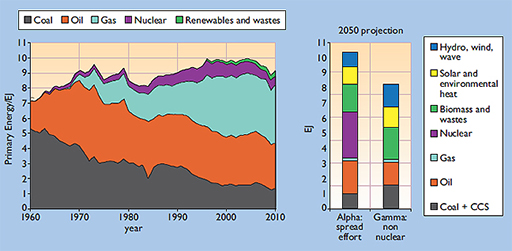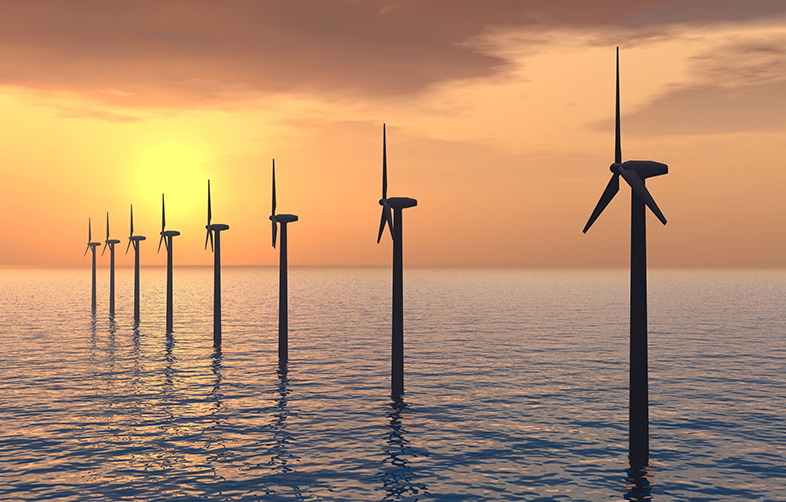3 Pathways to 2050
Looking much further ahead, to 2050, DECC produced in 2010 a Pathways Analysis (DECC, 2010c) illustrating a number of different primary energy supply and demand ‘pathways’ that the UK could choose to pursue between 2010 and 2050 in order to achieve the government’s goal of reducing UK greenhouse gas emissions by 80%.
There are six of these ‘illustrative’ pathways, labelled A to Z, plus a Reference pathway, labelled R.

Figure 2 shows the historic mix of UK primary energy use over the five decades from 1960 to 2010, and two different projected future mixes of energy supply and demand by 2050 - those described in DECC pathways Alpha and Gamma. Pathway Alpha (‘balanced effort’) envisages renewables contributing around one third of UK primary energy by 2050. In the renewables-intensive pathway Gamma the total renewable energy contribution (including renewables from waste) rises to approximately 60% by 2050.
Having looked at renewable energy futures for the UK, we now turn to two EU nations that have taken the lead in renewable energy deployment: Denmark and Germany.
